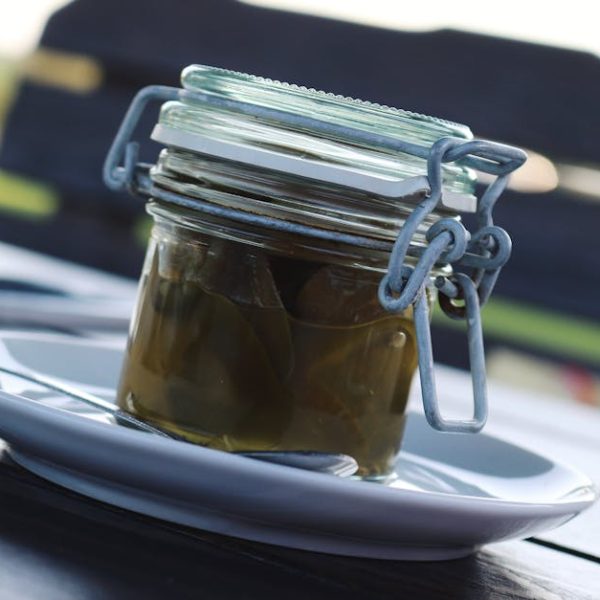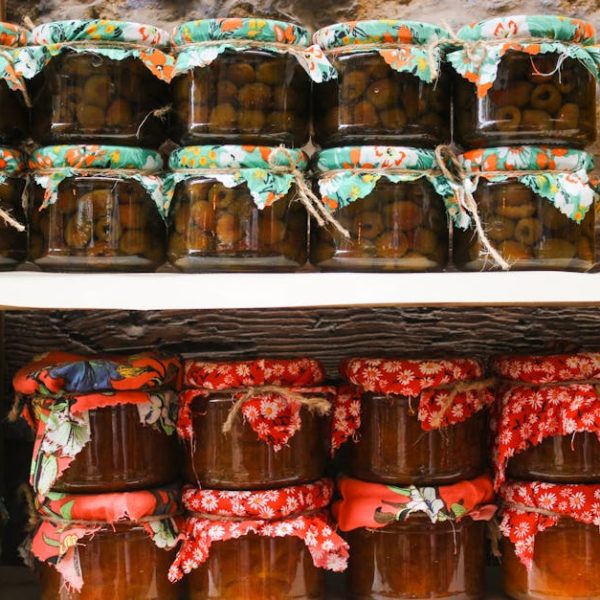Are you constantly finding yourself having too much celery, either from an abundant harvest or a bulk supermarket purchase? Most of us have been there and we all know how quickly it deteriorates, leaving us wondering how to use it all before it spoils. Luckily, there are a number of innovative and remarkable ways to preserve celery, ensuring our favorited crunchy stalks are not wasted. From a modern method like blu-ray freezing to old classics like pickling, this article will equip you with diverse and delightful approaches through handy tips, recipes, and clear step-by-step instructions.
Preserving Celery by Blu-ray Freezing
Freezing is an excellent way to preserve the crisp and refreshing quality of celery. Unlike raw freezing, blu-ray freezing involves a process known as blanching, which requires briefly immersing the vegetable in boiling water followed immediately by a shocking cold bath. This technique not only disinfects the celery but also slows the enzymes responsible for spoiling, thereby prolonging its freshness.
Steps:
- Clean and cut your celery into preferred sizes.
- Boil water in a large pot and immerse celery for about 3 minutes.
- Transfer the celery into ice water.
- Once cooled, drain the celery and pack into freezer-safe bags, ensuring to remove as much air as possible.
- Pop the bags into the freezer.
Pro Tip: Celery preserved using freezing is best used in cooked dishes like soups and stews, as freezing can slightly alter the texture of the vegetable.
Celery Pickling Recipe
Pickling transforms celery into a tangy and crispy treat, perfect as an appetizer or to sass up your sandwiches. The process involves submerging celery in a seasoned vinegar mixture, known as brine, and canning it.
Ingredients:
- celery stalks (cleaned and cut into preferred sizes)
- distilled white vinegar
- salt
- sugar
- spices (to taste)
Steps:
- Pack the prepared celery into jars, leaving about a 1/2 inch of headspace.
- Bring vinegar, salt, sugar, and your desired spices to a boil in a pot.
- Pour the hot brine over the celery in the jars, ensuring they are fully submerged.
- Seal the jars and let them cool before transferring them to the refrigerator.
- Allow for at least a week for the pickles to develop the desired tanginess.
Pro Tip: Patience is key when it comes to pickling. The longer you wait, the more flavorful your pickled celery becomes.
We’ve explored freezing and pickling so far, but read on to discover more unconventional yet highly effective methods of preserving celery. After all, variety is the spice of life and your celery deserves some spicing up, don’t you think?
Preserving Celery with Salt
Salt preservation, also known as cellaring, is a method that has been used for centuries before modern refrigeration was invented. This technique not only helps preserve the crunchy texture of celery, but it also enriches the celery with a unique briny flavor.
Best Practices:
- Choose fresh celery: The fresher, the better. Fresh celery retains more of its natural moisture, which is key to successful salt preservation.
- Use coarse salt: Coarse salt draws out moisture more effectively, which helps to preserve the celery.
- Store in an airtight container: After covering the celery with salt, store everything in an airtight container to prevent any moisture from contaminating the celery.
Pros and Cons of Salt Preservation
| Pros | Cons |
|---|---|
| • Natural way to preserve celery | • Alters the original taste of celery |
| • No extra packaging or storage equipment required | • Could increase your dietary salt intake |
Preserving Celery in Brine
Toying with the idea of getting handy with brine? You can never go wrong! Brine preservation is a straightforward and flexible method that allows you to adjust the flavors according to your own tastes by mixing and matching herbs and spices.
Brine Recipe:
- celery (washed and cut to your preferred sizes)
- water
- salt
- vinegar
- preferred spices
Steps:
- Prepare your brine by mixing water, salt, and vinegar together in a pan. Let it boil.
- Pack your celery into jars and pour the hot brine into the jars, making sure the celery is fully submerged.
- Seal the jars and let them cool down before storing them in a dark, cool place.
Pro Tip: To ensure the overwhelming flavor of the brine doesn’t mute the natural celery taste, make sure your brine is not overbearingly salty.
Celery Juice Canning
For the health-conscious folks out there, juicing celery and preserving the juice through canning is a great way to go! Celery juice is packed with plethora of nutrients and by canning it, you are securing all these benefits for much longer.
Best Practices:
- Only use fresh, healthy celery stalks for juicing.
- Strain your freshly made celery juice to remove all the fibrous materials.
- Sterilize your jars thoroughly before canning your celery juice.
Pros and Cons of Preserving Celery as Juice:
| Pros | Cons |
|---|---|
| • Convenient way to consume celery | • Consumes more celery stalks |
| • Preserves most nutrients | • Less versatile than whole preserved celery |
Preserving celery is indeed a practical and economical way to make the most of your celery. Try these methods out and let your kitchen come alive with delightful preservation pathways. It doesn’t just stop at celery though, feel free to get creative and apply these methods to other fruits and vegetables. Happy preserving!
Key Takeaway:
- Blu-ray freezing is a practical method for preserving celery, which involves blanching the vegetable before freezing.
- Pickling offers a flavor-enhancing preservation method for celery, allowing it to be used in a variety of dishes.
- Salt preservation or “cellaring” is a historic method that imbues celery with a unique briny flavour.
- Preserving celery in brine is a quick, tasty method that allows for flavour adjustments through different herb and spice choices.
- Juicing celery and preserving it through canning is an excellent way to retain the vegetable’s nutritional benefits for an extended period.
Innovative ways abound for preserving celery, helping you prevent wastage and enjoy this nutritious vegetable longer. Don’t shy away from experimenting with these methods. Enjoy the surprising flavours they bring to your meals while making the most of your celery stash. All it takes is some effort and creativity to reimagine your celery’s destiny!
FAQs
Q: Can I do a combination of preservation methods, like pickling then freezing?
A: Yes, you can. However, bear in mind the texture and flavor of your celery will be impacted by each preservation method.
Q: What other vegetables can I apply these preservation techniques to?
A: These methods are quite versatile and can be applied to a wide range of fruits and vegetables such as cucumbers, peppers, carrots, lemons, etc.
Q: How long does pickled celery last?
A: When properly canned and stored in a cool, dark place, pickled celery can last up to a year.
Q: Will freezing change the taste of my celery?
A: Freezing can alter the texture of celery, making it less crisp, but it should not change the taste significantly.
Q: What can I do if my celery preserved in salt seems too salty for my dishes?
A: If your salt-preserved celery is too salty, try rinsing it briefly under cold water before using it in your dishes.
Feel free to share this article and explore more posts for delightful culinary journeys and handy kitchen tips.






